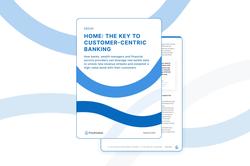Customer centricity, personalised experiences and meaningful relationships are key factors in the success of banks and financial service providers. It is also evident that local real estate is the perfect anchor point for banks and financial service providers to get closer to their customers, due to it being a particularly emotional asset class. Besides these few ‘global’ arguments, it is important to examine the market situation in a few countries in order to understand how real estate data can benefit banks, and financial service providers on a local level. In our article, we focus on the market situation in the UK, Germany, Switzerland, and France.
Whenfresh.com has now merged with PriceHubble.com
To provide you with a better experience and improved content, your login page and all our resources are now available on a single website. You will be automatically redirected in a few seconds. If the redirection doesn't happen, please click the button below.
Redirection in 10 seconds...
Go directly to pricehubble.com









